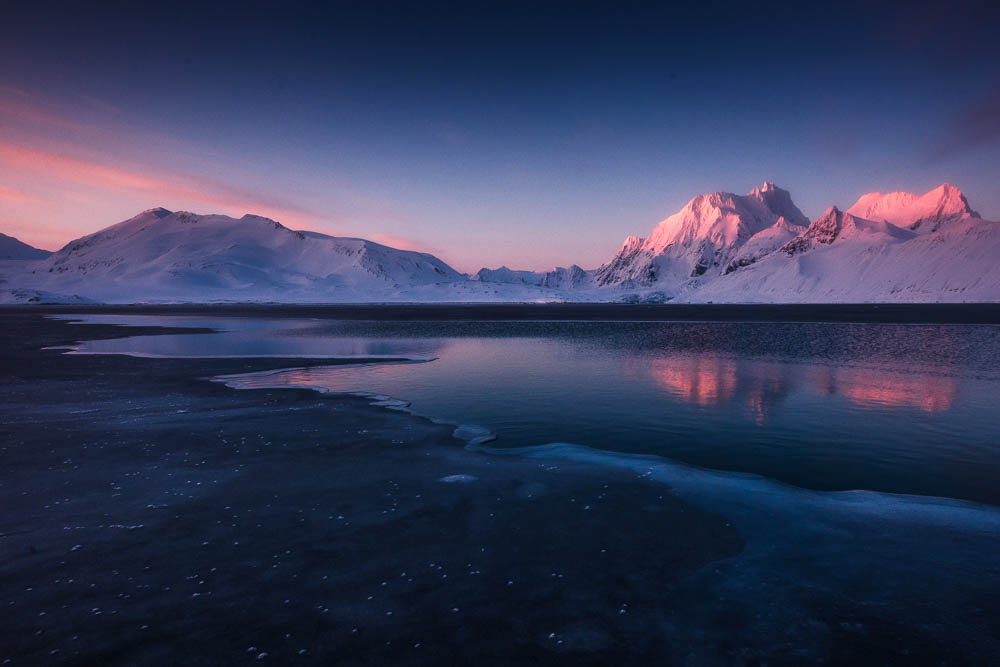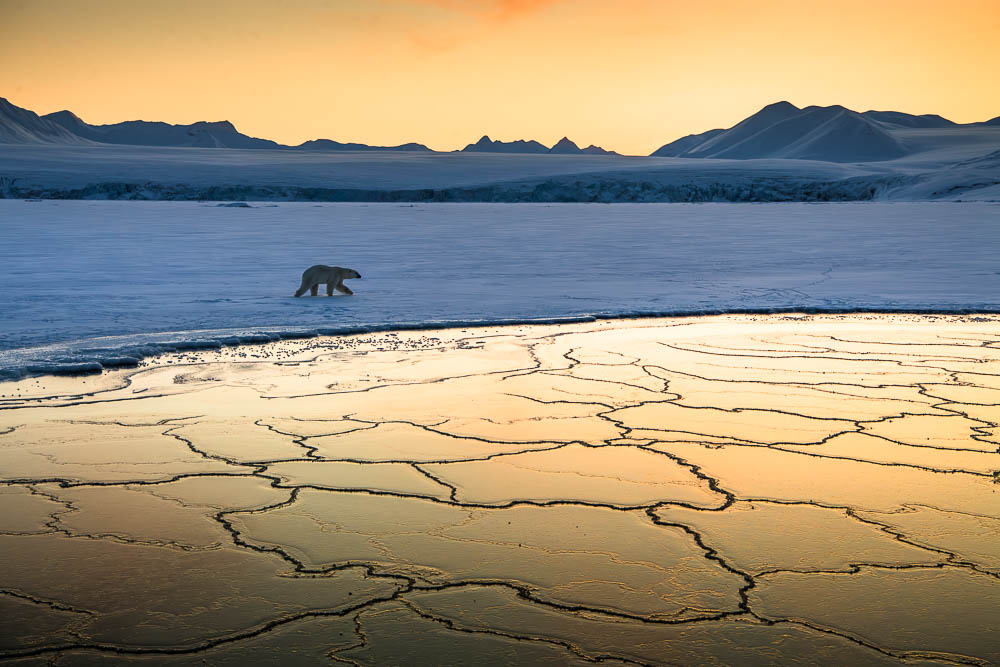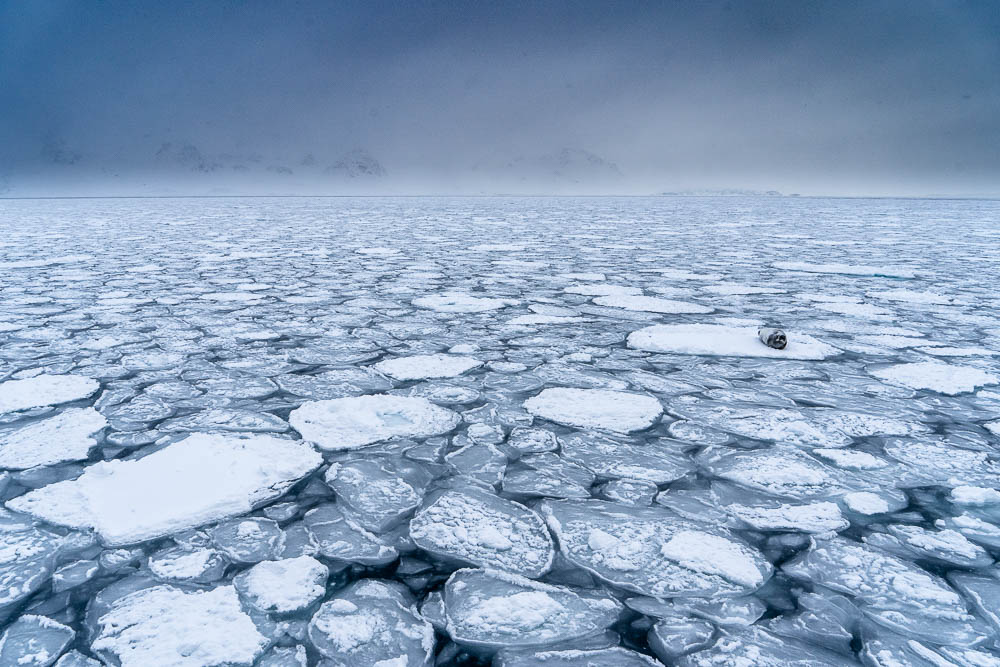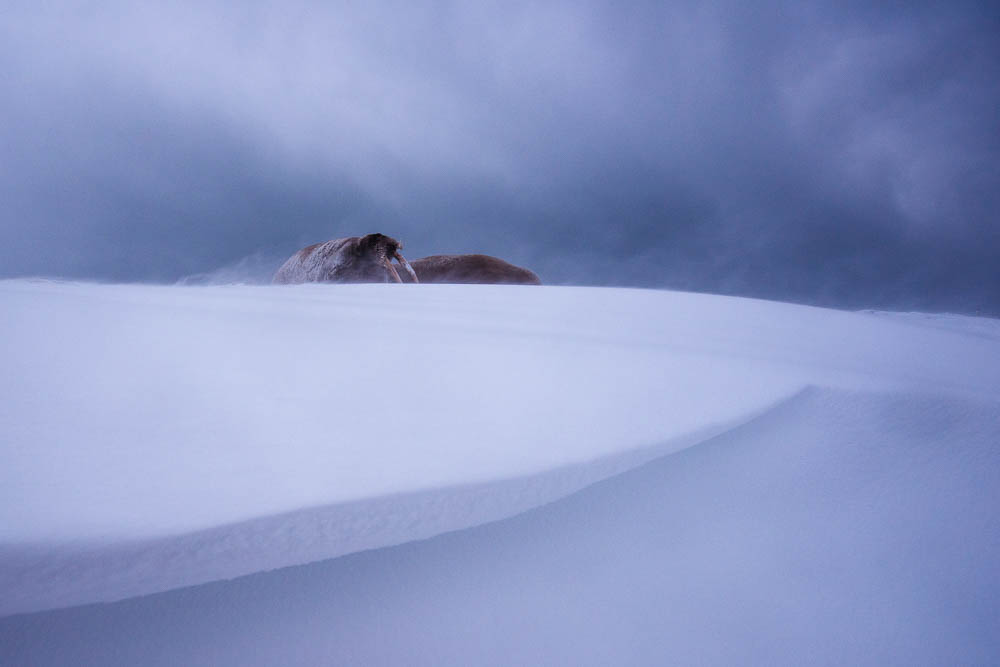Svalbard Winter Extreme
Svalbard Winter Extreme Photo Expeditions in March and early April are designed for adventurous landscape and wildlife photographers eager to capture the High Arctic's beauty in its stunning winter light. This is a time of extremes - where biting cold meets stark beauty, and the wilderness feels untamed. With the landscape covered in snow and ice, and temperatures often around -20°C, these expeditions offer an unforgettable Arctic experience.
The main focus of a Svalbard Winter Extreme expedition is Arctic winter light and landscape photography. In March and early April, the light conditions are exceptional, with beautiful blue, pink, and orange tones. Although wildlife is less abundant compared to summer, the combination of animals against the dramatic winter scenery creates striking opportunities for wildlife photography.
WildPhoto Travel pioneered ship-based winter expeditions to Svalbard in 2016. Since then, we have organised more than 30 successful photo expeditions in March and April, navigating the western and northwestern parts of Spitsbergen aboard expedition ships.
If you're looking for a truly unique Arctic photo adventure, this expedition is perfect for you!
Amazing Arctic Winter Landscape Photography
• Great pink and blue Arctic colours
• Long sunsets and sunrises
• Stunning mountain landscapes
The western coast of Svalbard is renowned for its dramatic landscapes, making it a paradise for landscape photographers, especially in March and early April.

PhotographingPolar Bears in Winter Landscape
• Rare opportunity to photograph polar bears in winter
• Background with stunning winter landscape
• Polar bears and other wildlife on sea ice
Polar bears and other wildlife can be found on drifting sea ice, fjord ice, or along the shoreline, with the majestic winter landscape providing a stunning backdrop for photography.

Explore thePancake Ice and Frozen Sea
• Witness the "birth of ice"
• Great opportunities for landscape photography
• Wildlife on ice floes
One of the fascinating winter phenomena is pancake ice — an early stage of sea ice formation, consisting of nearly circular plates that float across the sea's surface.

Available spots on Svalbard Winter Extreme
Below is a list of available cabins for our Svalbard Winter Extreme expeditions onboard our expedition ship MS Virgo (maximum of 12 guests). The price displayed for each cabin is per person, not for the entire cabin. To inquire or book a spot, simply click the button under your preferred cabin, and you’ll be directed to an email to booking@wildphoto.com where you can provide more details about what you are interested in or request further information. If your desired cabin or availability isn't listed, please let us know. We can add you to the waiting list and notify you if spots become available later.
Itinerary Svalbard Winter Extreme
DAY 1 Departure from Longyearbyen through Isfjorden.
DAY 2-4 Northwestern coast of Spitsbergen, with possible visits to Kongsfjorden, Magdalenefjorden, Smeerenburgfjorden, Raudfjorden, Liefdefjorden and other areas. Here we have the possibility of having great landscapes with glaciers and sharp mountain ridges.
DAY 5-7 Southwestern coast of Spitsbergen with Bellsund and Hornsund, where there are great snow-covered mountains. The weather and ice conditions have to be in our favor to get into both the northwestern and southwestern areas of Spitsbergen in winter.
DAY 8 Returning to Isfjorden arriving in Longyearbyen port late in the evening.
DAY 9 Disembarking the ship after breakfast and preparing for the travel home.
The map below illustrates a possible itinerary for a Svalbard Winter Extreme photo expedition.

FAQ - Good to know about Svalbard Winter
Click on the frequently asked questions below to learn more about our Svalbard Winter Extreme photo expeditions.
PhotographingWalrus & Seals in Winter
• Walrus & seals in snow and ice
• Dramatic landscape
• Wildlife on ice floes
Walruses and seals can be found resting on ice floes at sea or in the fjords. In winter, when sea ice is not blocking the beaches, walruses may also rest on land in the snow.

Other Svalbard seasons for photographers
Not interested in a Winter Extreme expedition in March or early April? No problem! We offer four other exciting seasonal options for travelling to Svalbard. Click on any of the images below to explore more about our other seasons with photography expeditions to Svalbard.
Please click on one of the buttons below to request more information about Svalbard Winter Extreme expeditions or if you want to reserve a spot.
WildPhoto Travel is a leading photo expedition company - specialized in polar regions. Since 2006, we have offered great photo opportunities for our guests and partners.











